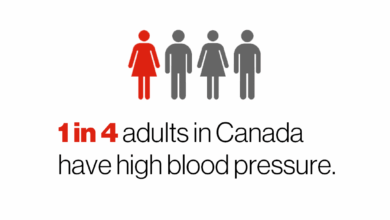
Girlfriends guide to a leaky bladder: navigating this often-overlooked issue with knowledge and support. This guide dives deep into understanding urinary incontinence, exploring its various types, causes, and impacts on women’s daily lives. We’ll unpack lifestyle modifications, medical interventions, and the crucial role of support systems in managing bladder leaks effectively. From simple dietary changes to exploring medical options, we’ll provide a comprehensive resource for women seeking solutions and a better understanding of their bodies.
This guide will empower you with practical strategies and resources to help you feel more confident and informed about managing urinary incontinence. We’ll cover everything from understanding the different types of bladder leaks to exploring lifestyle adjustments, medical interventions, and finding the support you need. We’ll examine dietary considerations and provide insights into choosing the right products to manage leaks.
We’ll emphasize the importance of seeking help and maintaining a positive attitude throughout this journey.
Understanding the Issue: Girlfriends Guide To A Leaky Bladder

Urinary incontinence, often referred to as a leaky bladder, is a common issue, particularly among women. It’s not a sign of weakness or something to be ashamed of, but rather a condition with various contributing factors and effective management strategies. Understanding the different types, causes, and symptoms is crucial for navigating this condition and finding relief.
Types and Causes of Urinary Incontinence
Urinary incontinence encompasses several types, each with its own characteristics and underlying causes. Stress incontinence, for instance, is triggered by physical strain, like coughing, sneezing, or exercising. Urge incontinence, on the other hand, is characterized by a sudden, overwhelming urge to urinate, often followed by a loss of bladder control. Mixed incontinence combines elements of both stress and urge incontinence.
Factors Contributing to Leaky Bladder in Women
Several factors increase a woman’s risk of developing urinary incontinence. Age-related changes in bladder and pelvic floor muscles can lead to decreased bladder control. Pregnancy and childbirth often weaken pelvic floor muscles, potentially resulting in incontinence. Certain medical conditions, such as diabetes, multiple sclerosis, and neurological disorders, can also disrupt normal bladder function. Lifestyle factors like smoking and obesity can also play a role.
Symptoms of Different Types of Incontinence
Recognizing the symptoms of each type of incontinence is vital for accurate diagnosis and appropriate treatment. Stress incontinence typically involves leakage during activities that increase abdominal pressure. Urge incontinence presents as frequent and sudden urges to urinate, often leading to leakage before reaching the toilet. Mixed incontinence combines the symptoms of both stress and urge incontinence.
Impact on Daily Life
Urinary incontinence can significantly impact a woman’s daily life, both physically and emotionally. It can lead to social isolation, anxiety, and embarrassment. Women may avoid certain activities, like exercise or social gatherings, due to the fear of leakage. The physical discomfort and inconvenience associated with the condition can also affect sleep and overall well-being.
Common Triggers and Solutions
| Trigger | Potential Solution |
|---|---|
| Coughing | Strengthening pelvic floor muscles through exercises (Kegels) and avoiding excessive coughing triggers. |
| Sneezing | Similar to coughing, strengthening pelvic floor muscles and managing potential underlying respiratory conditions. |
| Sudden urges | Adopting bladder training techniques to improve bladder control, and identifying and managing underlying medical conditions that contribute to urge incontinence. |
| Heavy lifting | Modifying lifting techniques to avoid straining the bladder and pelvic floor, using appropriate support and lifting aids if needed. |
| Exercise | Choosing activities that do not put significant pressure on the bladder, and incorporating pelvic floor exercises into a workout routine. |
This table provides a glimpse into common triggers and potential solutions. It’s important to consult with a healthcare professional for personalized advice and a proper diagnosis, as every individual’s experience and needs can vary greatly.
Lifestyle Modifications
Taking control of your bladder health often involves simple lifestyle adjustments. These changes, when combined with other strategies, can significantly improve your quality of life. Understanding how certain choices impact your bladder function is key to managing leaks effectively.Implementing these modifications is often more about making conscious, consistent choices than about radical overhauls. Small, sustainable changes can lead to substantial improvements in your overall well-being.
Fluid Intake and Bladder Function
Proper hydration is crucial for overall health, including bladder function. Adequate fluid intake helps dilute urine, making it easier for your kidneys to filter waste products. Conversely, dehydration can lead to concentrated urine, increasing the likelihood of bladder irritation and leakage. While it’s important to stay hydrated, excessive fluid intake can also strain your bladder, increasing the frequency of urination.
Foods and Beverages That May Exacerbate Urinary Incontinence
Certain foods and beverages can irritate the bladder, potentially worsening incontinence symptoms. These include spicy foods, acidic foods like citrus fruits, and caffeinated beverages like coffee and tea. Alcohol is also a significant contributor to urinary incontinence, often impacting bladder control due to its diuretic effect. Individual reactions can vary, so keeping a food diary can help identify potential triggers.
- Spicy foods: Chili peppers and other spicy dishes can sometimes irritate the bladder, potentially increasing the frequency of urination and the risk of leaks.
- Acidic foods: Citrus fruits, tomatoes, and other acidic foods may also trigger bladder irritation in some individuals.
- Caffeine: Caffeinated beverages, including coffee, tea, and soda, are known diuretics, leading to increased urination and potentially worsening bladder control issues for some.
- Alcohol: Alcohol, due to its diuretic properties, can lead to increased urine production and contribute to urinary incontinence.
Pelvic Floor Exercises
Pelvic floor exercises, also known as Kegels, strengthen the muscles that support the bladder and urethra. These exercises are a cornerstone of managing urinary incontinence, and their effectiveness varies depending on the type of exercise and the individual.
| Exercise Type | Description | Effectiveness |
|---|---|---|
| Kegel Exercises | Squeezing the muscles you would use to stop urination. Hold for a few seconds, release, and repeat. | Generally effective for strengthening the pelvic floor muscles. |
| Bladder Retraining | Gradually increasing the time between bathroom visits. This helps the bladder adapt to holding more urine. | Useful for improving bladder capacity and reducing frequency of urination. |
| Biofeedback | Using sensors to track pelvic floor muscle contractions. This helps individuals identify and improve their muscle control. | Can be highly effective, particularly in cases of complex incontinence issues, as it provides personalized feedback. |
Stress Management Techniques
Stress can exacerbate bladder issues. High stress levels can trigger muscle tension in the pelvic floor, leading to increased pressure on the bladder and potentially more frequent or severe leaks. Stress management techniques like deep breathing, meditation, and yoga can help reduce this tension and improve bladder control. For example, regular mindfulness practices have been shown to reduce stress levels and potentially improve bladder function in individuals experiencing incontinence.
Regular Exercise
Regular exercise, including both cardiovascular and strength training, contributes to overall physical health and can positively impact bladder control. Exercise improves blood circulation, which can help support the muscles and tissues involved in urination. It also helps maintain a healthy weight, a significant factor in managing incontinence. For instance, maintaining a healthy weight reduces the strain on the pelvic floor, thus improving bladder control.
Medical Interventions
Dealing with a leaky bladder can be frustrating, but thankfully, numerous medical interventions are available to help manage and alleviate the issue. These interventions range from lifestyle adjustments to more involved medical procedures, and the best course of action will depend on the individual’s specific situation and the severity of the incontinence. Choosing the right path requires careful consideration and consultation with healthcare professionals.Medical interventions for urinary incontinence involve a range of approaches, from medications and devices to surgical procedures.
The choice of intervention depends heavily on the underlying cause of the incontinence, the patient’s overall health, and the desired outcome. Open communication with a healthcare professional is crucial for determining the most suitable and effective treatment plan.
Medications
Medications can play a significant role in managing certain types of urinary incontinence. These medications often work by strengthening pelvic floor muscles or altering bladder function. For instance, some medications can help increase bladder capacity, while others can reduce bladder spasms. A healthcare professional can determine if medications are an appropriate intervention based on the individual’s specific condition.
Devices
Several devices can be used to manage urinary incontinence. These devices, such as pessaries for women, provide support to the urethra and bladder neck, helping to prevent leakage. Furthermore, there are absorbent pads and protective undergarments that can help manage leakage. The effectiveness of these devices varies depending on the type and severity of incontinence.
Healthcare Professionals’ Role
Healthcare professionals, including urologists, gynecologists, and other specialists, play a vital role in diagnosing and treating urinary incontinence. They perform thorough examinations, conduct necessary tests, and create personalized treatment plans. This expertise is essential for determining the root cause of the issue and choosing the most appropriate intervention. A proper diagnosis is crucial to ensure the chosen treatment effectively addresses the specific type of incontinence.
Incontinence Devices: Comparison
Different types of incontinence devices cater to various needs and preferences. For instance, absorbent pads and protective undergarments are primarily designed to manage leakage, while pessaries provide support to the urethra and bladder neck. The selection of a device depends on factors such as the severity of incontinence, lifestyle considerations, and comfort levels. Consideration of personal preferences is essential in the choice of device.
Surgical Options
In cases of severe urinary incontinence that doesn’t respond to other interventions, surgical options may be considered. These procedures can involve strengthening the pelvic floor muscles, reconstructing the bladder neck, or repositioning the urethra. Surgical options can be complex and carry potential risks, so careful evaluation and discussion with a healthcare professional are essential. The decision to pursue surgical intervention is a personal one, made in consultation with medical experts.
Hey ladies, navigating a girlfriends guide to a leaky bladder can be tricky, right? But did you know that some of the same mindful movement techniques that can help manage conditions like rheumatoid arthritis, like yoga can help with rheumatoid arthritis symptoms , can also be surprisingly beneficial for pelvic floor strength? Strengthening your core through yoga and similar practices can actually contribute to a more supportive pelvic floor, ultimately helping with bladder control issues.
So, let’s get those pelvic floors strong, one downward dog at a time!
Importance of Professional Medical Advice
Seeking professional medical advice is crucial for anyone experiencing urinary incontinence. A healthcare professional can accurately diagnose the underlying cause of the issue and recommend the most appropriate treatment plan. This proactive approach helps individuals manage their condition effectively and improve their quality of life. The knowledge and expertise of healthcare professionals are essential for navigating the complexities of urinary incontinence.
Support and Resources
Navigating urinary incontinence can feel isolating. However, knowing you’re not alone and having access to the right support systems can make a significant difference. This section will explore valuable resources and strategies for finding comfort and assistance. Understanding your options can empower you to take control of your well-being.Many women experience urinary incontinence without feeling comfortable discussing it with friends or family.
Navigating the tricky terrain of a girlfriend’s guide to a leaky bladder can be tricky, but finding the right support is key. It’s important to remember that figuring out the best ways to manage this can be a journey, and sometimes the best support comes from unexpected places. For example, when choosing a car seat for your little one, finding the best convertible car seat is crucial for both comfort and safety.
Ultimately, a girlfriend’s guide to a leaky bladder is about understanding your body and finding solutions that work for you, just like finding the perfect car seat is about prioritizing safety and comfort for your little one.
This often leads to feelings of shame and isolation. However, recognizing that this is a common health concern and seeking support can significantly improve your experience. Open communication and access to helpful resources are crucial steps in managing this condition effectively.
Support Groups and Organizations
Finding a supportive community is essential for managing urinary incontinence. Support groups provide a safe space to share experiences, ask questions, and connect with others facing similar challenges.
- The National Association for Continence (NAFC) offers valuable information, resources, and support for individuals with urinary and fecal incontinence. They provide a wealth of materials, including educational resources, articles, and a network of support groups.
- The Continence Foundation of America (CFA) offers education and resources for managing incontinence. They provide educational materials, support groups, and information about treatment options.
- Local hospitals and clinics often host support groups specifically for women with urinary incontinence. These groups provide a local network of support and understanding. Contact your local hospital or health system to inquire about available support groups in your area.
Online Resources
The internet provides a wealth of information and support for those dealing with urinary incontinence. Reputable websites and forums can offer valuable insights, personal stories, and advice from others experiencing similar situations.
- Websites like the National Institute of Diabetes and Digestive and Kidney Diseases (NIDDK) offer comprehensive information on various urinary health conditions, including incontinence. These sites often provide detailed explanations of the causes, symptoms, and treatment options for incontinence.
- Online forums dedicated to women’s health and urinary incontinence can be invaluable for connecting with others. These online communities provide opportunities for sharing experiences, asking questions, and gaining support from a network of peers. Remember to be cautious and verify the credibility of the information found on online forums.
Talking to Loved Ones
Open communication with loved ones is vital for managing urinary incontinence. Expressing your concerns and seeking their support can create a more understanding and supportive environment.
- Start by explaining the situation in a calm and clear manner. Use simple and straightforward language, and avoid technical terms. Emphasize that this is a common health concern, not a personal failing.
- Be prepared for potential questions or concerns from loved ones. Address their concerns with empathy and understanding. Provide resources, such as articles or website links, to help them better understand the condition.
- Seek support from trusted individuals, such as family members, friends, or partners. Having someone to confide in and share your experiences with can greatly alleviate feelings of isolation.
Support Systems Summary
| Type of Support | Description |
|---|---|
| Support Groups | Offer a safe space for sharing experiences, asking questions, and connecting with others facing similar challenges. |
| Online Resources | Provide access to valuable information, personal stories, and advice from others experiencing similar situations. |
| Loved Ones | Crucial for creating a more understanding and supportive environment, enabling open communication about concerns. |
Maintaining a Positive Attitude and Seeking Help, Girlfriends guide to a leaky bladder
Maintaining a positive attitude and seeking help are crucial components of managing urinary incontinence effectively. It’s essential to understand that seeking assistance isn’t a sign of weakness but a sign of strength and proactive health management.
| Aspect | Importance |
|---|---|
| Positive Attitude | Maintaining a positive outlook fosters resilience and helps navigate the challenges associated with incontinence. |
| Seeking Help | Seeking assistance from healthcare professionals and support networks demonstrates proactive health management. |
Importance of Not Feeling Ashamed or Embarrassed
Urinary incontinence is a common health concern, and it’s crucial to avoid feelings of shame or embarrassment. It’s essential to remember that you’re not alone, and seeking help is a sign of strength, not weakness.
Hey ladies, tackling a leaky bladder can be tricky, right? It’s totally relatable, and luckily, there are resources out there to help. While we’re on the topic of health, have you heard of the “bigfoot unity connected diabetes system”? bigfoot unity connected diabetes system might offer some interesting insights into interconnected health issues. But back to the important stuff – the Girlfriends Guide to a Leaky Bladder is a great resource for finding solutions and support.
Urinary incontinence is a common condition that affects millions of women. It’s important to remember that you’re not alone and that there are resources available to help.
Product Information
Navigating the world of incontinence products can feel overwhelming. Understanding the various types available and their specific functions is key to finding the best solution for your needs. This section details the different options, highlighting their advantages and disadvantages, and offering guidance on choosing the right product.Incontinence products range from absorbent pads and liners to more advanced devices.
Each product is designed to address specific needs and provide varying levels of protection and discretion. Choosing the right product involves considering factors like the severity of your leakage, your lifestyle, and your personal preferences.
Absorbent Pads and Liners
Absorbent pads and liners are the most common types of incontinence products. They are designed to absorb urine and provide a layer of protection against leakage. These products are generally discreet and easy to use, making them a popular choice for many.
- Absorbent Pads: These products come in various sizes and absorbency levels. They are typically worn under clothing, offering a layer of protection from leaks. Pads are available in different materials and thicknesses to provide varying levels of absorbency and comfort.
- Liners: Liners are thin, disposable pads that are worn directly against the skin. They are often used as a supplemental layer of protection beneath underwear or under other absorbent products. Liners are particularly useful for light leakage or as a barrier to protect clothing.
Other Incontinence Products
Beyond absorbent pads and liners, a variety of other products are available to help manage bladder leaks.
- Protective Underwear: This type of underwear incorporates absorbent materials within the fabric. This provides a more complete solution for managing leakage and offers more protection than just pads or liners. Some types offer leak-proof protection. However, they can sometimes be bulky and less discreet than other options.
- Condom Catheters: Designed for men, these catheters are specifically tailored for collecting urine. They are often a convenient option for managing urinary leakage.
- Absorbent Underwear: Similar to protective underwear, these provide a more comprehensive solution, offering a barrier between clothing and leakage. Some are designed with additional features like moisture-wicking technology or a reinforced structure to increase their leak-proof capability.
Choosing the Right Product
The best incontinence product for you depends on your individual needs. Factors to consider include the amount and frequency of leakage, your lifestyle, and your personal preferences. It’s essential to experiment with different products to find the one that best fits your needs.
| Product Category | Features | Benefits | Drawbacks |
|---|---|---|---|
| Absorbent Pads | Varying absorbency levels, sizes, and materials | Discreet, easy to use, affordable | May not be suitable for heavy leakage, can feel bulky |
| Liners | Thin, disposable, absorbent | Additional layer of protection, comfortable | Limited absorbency, may not be suitable for heavy leakage |
| Protective Underwear | Absorbent materials within the fabric | Complete solution for leakage, more protection than pads or liners | Bulky, potentially less discreet than other options |
Brand Comparison
A wide variety of brands offer incontinence products. Comparing different brands and product types can help you determine which ones best suit your needs. Consider factors like absorbency, comfort, and price when making your selection.
| Brand | Product Type | Absorbency | Comfort | Price |
|---|---|---|---|---|
| Brand A | Absorbent Pads | High | Moderate | Moderate |
| Brand B | Protective Underwear | Medium | High | High |
| Brand C | Liners | Low | High | Low |
Dietary Considerations

Maintaining urinary health often hinges on the foods we consume. A balanced diet, rich in certain nutrients and low in others, can significantly impact bladder function and the risk of urinary tract infections (UTIs). Understanding the connection between diet and bladder health is crucial for women seeking to manage and prevent issues like frequent urination and bladder leaks.
Foods That Support Urinary Health
A diet rich in fruits, vegetables, and whole grains provides essential vitamins, minerals, and fiber that support healthy urinary tract function. These foods contribute to a healthy gut microbiome, which can indirectly impact bladder health.
- Berries: Strawberries, blueberries, and raspberries are packed with antioxidants that can help protect against inflammation and infection. Their high water content also helps to flush out toxins.
- Cruciferous Vegetables: Broccoli, cauliflower, and kale are rich in vitamins and minerals that support overall health. These vegetables are also known for their potential to aid in detoxification processes, indirectly supporting bladder health.
- Leafy Greens: Spinach, kale, and collard greens are excellent sources of vitamins and minerals. Their high water content helps keep the body hydrated, which is vital for optimal bladder function.
- Probiotic-Rich Foods: Yogurt, kefir, and sauerkraut contain beneficial bacteria that support a healthy gut microbiome. A healthy gut microbiome can indirectly contribute to a healthier urinary tract.
- Water: Water is crucial for flushing out waste products and maintaining proper hydration. Adequate hydration is essential for preventing bladder issues.
The Role of Hydration in Bladder Function
Hydration plays a vital role in bladder health. A properly hydrated body can effectively flush out toxins and maintain the optimal environment for a healthy urinary tract.
Drinking enough water helps dilute urine, reducing the concentration of potentially irritating substances and decreasing the risk of bladder irritation. Adequate hydration also helps prevent the formation of bladder stones and maintain the overall health of the urinary tract system.
Reducing Foods That May Irritate the Bladder
Certain foods can irritate the bladder, leading to increased frequency of urination, discomfort, and even UTIs. Identifying and reducing the intake of these foods can significantly improve bladder health.
- Spicy Foods: Chili peppers, curry, and other spicy foods can trigger inflammation and irritation in the urinary tract.
- Acidic Foods: Highly acidic foods like tomatoes, citrus fruits, and processed foods can irritate the bladder lining.
- Caffeine and Alcohol: These substances can act as diuretics, leading to increased urination frequency and potential bladder irritation.
- Artificial Sweeteners: Some studies suggest that artificial sweeteners may have an impact on bladder health. Reducing or eliminating these sweeteners may be helpful.
Diet and Bladder Control
Diet significantly impacts bladder control. Foods high in fiber can help maintain regularity, preventing constipation, which can sometimes contribute to bladder issues.
A balanced diet rich in fiber, vitamins, and minerals, coupled with sufficient hydration, contributes to overall urinary tract health and can significantly influence bladder control.
Dietary Strategies for Frequent UTIs
A diet that supports a healthy gut microbiome and avoids irritating substances can significantly reduce the frequency of UTIs.
- Increased Water Intake: Staying well-hydrated helps flush out bacteria from the urinary tract.
- Avoid Irritants: Reducing or eliminating spicy, acidic, and processed foods can decrease bladder irritation.
- Consume Probiotics: Probiotics support a healthy gut microbiome, which can indirectly support the immune system’s ability to fight infections.
- Cranberry Products: Some studies suggest that cranberries can help prevent UTIs by inhibiting bacterial adhesion to the bladder wall. However, individual responses vary.
Impact of Various Foods on Bladder Function (Comparison Table)
| Food Category | Potential Impact on Bladder Function | Examples |
|---|---|---|
| Fruits and Vegetables | Generally supportive, rich in antioxidants and hydration | Berries, leafy greens, cruciferous vegetables |
| Spicy Foods | May irritate the bladder lining | Chili peppers, curry |
| Acidic Foods | May irritate the bladder lining | Tomatoes, citrus fruits |
| Processed Foods | Potentially irritating and lacking in nutrients | Processed meats, packaged snacks |
| Hydration | Essential for flushing out toxins and maintaining bladder health | Water, herbal teas |
Final Wrap-Up
In conclusion, navigating a leaky bladder is a journey, not a struggle. This guide has equipped you with the knowledge and resources to understand this common issue, explore lifestyle modifications, and consider medical interventions. Remember, seeking support, maintaining a positive attitude, and choosing the right products are crucial steps in reclaiming control and confidence. We encourage you to continue learning and to seek professional medical advice when needed.





